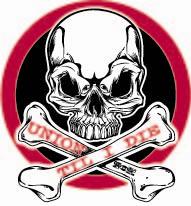
Union busting tactics
The following tactics are sometimes used:
Supervisors and managers can deliver letters, speeches, and informal chats, sometimes prepared by a union-buster.
Employees may be asked to attend one-on-one discussions, group meetings, or lectures about the union, during which they will be paid. Employers must be careful not to intimidate their employees, because employees can appeal to the NLRB, usually resulting in an election being rerun, and in some cases resulting in the employer being automatically required to recognize the union as the bargaining unit representing employees. At these meetings, employers discuss the negative aspects of a union and try to convince employees not to join.
In some cases, supervisors and managers will walk the floors more frequently and arrange impromptu chats and meetings to find out what their workers are up to.
The union-busters may prepare many letters to be signed by administrators, employees, and well-liked supervisors and managers. They may express appreciation for what the employees have done for the company, admit having made mistakes in the past and express an intention to do a better job in the future. They will also paint an ugly picture of the union or suggest that the union is hiding something.
To convince employees that they don't need a union to obtain improvements, a company may provide unexpected increases in wages or benefits, and may link benefits or wages not to join unions union or threaten wage cuts.
In extreme cases the union-buster may direct management to play one group of employees against another to generate disunity (e.g. "disloyal" union supporters versus "loyal" union opponents, one department against another, etc.).
United States Labor law presents very strict guidelines for both employer and union actions in union organizing. Unions and employers can attempt to present their factual case against or for the union, but employers cannot threaten employees or even make them feel intimidated. The union buster's key strategy, when confronted with an election, is to organize a Counter-Organizing drive.
The following tactics are sometimes used:
Supervisors and managers can deliver letters, speeches, and informal chats, sometimes prepared by a union-buster.
Employees may be asked to attend one-on-one discussions, group meetings, or lectures about the union, during which they will be paid. Employers must be careful not to intimidate their employees, because employees can appeal to the NLRB, usually resulting in an election being rerun, and in some cases resulting in the employer being automatically required to recognize the union as the bargaining unit representing employees. At these meetings, employers discuss the negative aspects of a union and try to convince employees not to join.
In some cases, supervisors and managers will walk the floors more frequently and arrange impromptu chats and meetings to find out what their workers are up to.
The union-busters may prepare many letters to be signed by administrators, employees, and well-liked supervisors and managers. They may express appreciation for what the employees have done for the company, admit having made mistakes in the past and express an intention to do a better job in the future. They will also paint an ugly picture of the union or suggest that the union is hiding something.
To convince employees that they don't need a union to obtain improvements, a company may provide unexpected increases in wages or benefits, and may link benefits or wages not to join unions union or threaten wage cuts.
In extreme cases the union-buster may direct management to play one group of employees against another to generate disunity (e.g. "disloyal" union supporters versus "loyal" union opponents, one department against another, etc.).
United States Labor law presents very strict guidelines for both employer and union actions in union organizing. Unions and employers can attempt to present their factual case against or for the union, but employers cannot threaten employees or even make them feel intimidated. The union buster's key strategy, when confronted with an election, is to organize a Counter-Organizing drive.
Millwright Ron

No comments:
Post a Comment